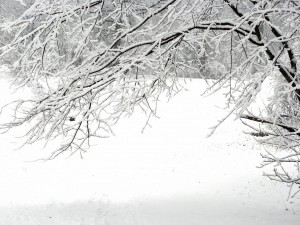 Winter tree protection becomes an emotional issue when you consider the enjoyment you receive from your favorite trees and shrubs. They’ve stood in your yard like quiet sentinels over the years and their presence has become part of your image of home. Imagine your feelings should one of your tree friends be destroyed in a Winter storm this year. The good news is that there is something you can do now to prevent such a disaster.
Winter tree protection becomes an emotional issue when you consider the enjoyment you receive from your favorite trees and shrubs. They’ve stood in your yard like quiet sentinels over the years and their presence has become part of your image of home. Imagine your feelings should one of your tree friends be destroyed in a Winter storm this year. The good news is that there is something you can do now to prevent such a disaster.
Winter Tree Protection: Pre-Winter
- Fertilize in Fall – Fertilizing your lawn in fall is a great way to ensure that all of your lawn plants are healthy enough to withstand the challenges they’ll face in winter. However, you should only fertilize in the fall if the weather will not reach below freezing temperatures during the winter, as it will keep them “awake” during winter when they should go dormant. If your winters are fairly mild, fertilization will simply give your tree some extra strength.
- Protect container plants since pots can freeze. Cover the plants with compost, mulch, old blankets or anything that can help insulate them. Don’t leave pots hanging. Place on the ground and cover.
Winter Tree Protection: Wrapping Trees
- Wrap Trees Up Warm – Trees actually can benefit from being wrapped up during intense winter storms such as ice storms. If you have a heavy storm in your forecast, you may want to add wrapping your trees in burlap fabric to your list of safety precautions.
- Provide a Stable Temperature – You can use plastic wrap to help trees maintain a stable temperature in winter. This is important because of a winter phenomenon known as “sun scald,” which is when freezing trees are exposed to bright winter sunlight, causing the bark of the tree to come out of dormancy only to be killed when the sun is blocked or goes down again. This will harm the tree, but can be prevented by wrapping trees in plastic wrap, paying special attention to the south/southwest sides.
- Protect Trunks – The trunks of your trees can do with a little protection in the late fall and early winter, as wild animals will eat parts of your tree and use others for shelter-building. Trees whose bark is stripped away at the base can become sick and even die. If you don’t want your trees used by animals for these purposes, you can wrap the bases of your trees in wire mesh.
- Wrap rope around vulnerable branches of bushes and shrubs. Tying the branches upward helps restructure the branches to a more upright position before the storm.
- When the forecast calls for temperatures below 20 degrees, cover tender plants with an old sheet, tablecloth or even plastic, anchored with rocks or other weights. Leave the protection in place; when the weather warms, take it off.
- Generally, do not water your plants in freezing conditions but shrubs growing underneath the eaves of a house are susceptible to drought damage. Water them deeply every six to eight weeks only when the air temperature is above freezing and early in the day.
Winter Tree Protection: After a Storm
Shake Off Snow and Ice – Though snowy trees are a beautiful sight, built up snow and ice can strain tree branches to the breaking point. You can use a broom to gently shake the branches and brush the snow away, but be careful not to shake too roughly and cause the branches to crack. If the branches of your tree are sagging under the weight of the snow, it’s a good indication that a brushing is in order. Leave snow at the base of plants because it insulates roots.
Winter Tree Protection: Insect Damage
While insects are less active during the Winter, when they emerge next Spring they can damage or destroy your favorite trees and plants, not to mention endanger your health and safety should they enter your home.
Call ApolloX Pest Control
(888) 499-7378
Credits: Tips for Winter Tree Protection – Green Lawn Fertilizing
Credits: Winter is arriving fast: Prepare your trees, yard and house …












Recent Comments